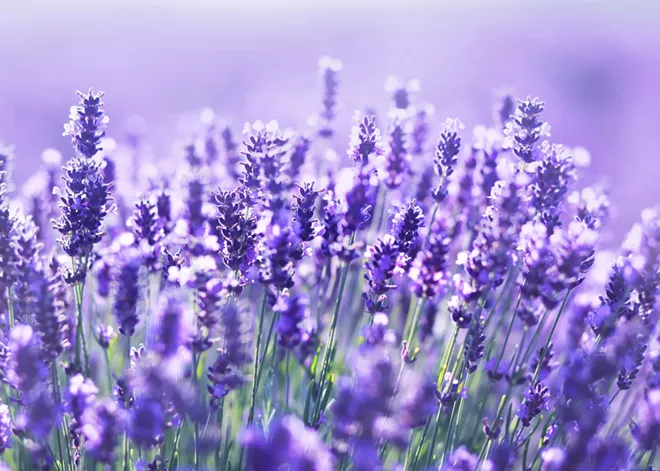Terpenes bring flavor and aroma to cannabis, and one in particular is suited for spring
April 10, 2025

The fragrant terpene linalool can be found in lavender and many indica cannabis strains.
Energy or relaxation? Indica or Sativa? Potent or mild? These are common questions facing cannabis consumers when shopping for a product. Taste and aroma are often overlooked, but just as important to consider.
Cannabis is known for its pungent aroma and vibrant, often strong flavor profile, but like wine or coffee, each variety is slightly different. That’s due in large part to chemicals known as terpenes. Every strain has a different mix of terpenes, leading to the diversity in scent and taste found across cannabis.
One terpene in particular brings flavor and aroma that perfectly compliments the natural fragrance of spring: linalool.
Other terpenes impart piney smells, great for winter, or citrusy ones, which match with summer, but it’s linalool’s floral and herbal profile that is ideally suited to pair with the bouquet of blossoms that come with spring.
Cannabis produces myriad terpenes, with linalool being among the most common. It is, however, unlike the piney pinene or the citrusy limonene, not too often the most concentrated terpene in a given strain.
However, some notable strains do feature linalool in a leading role, like Candy OG, Red Haze and Durban — not to be confused with Durban Poison. Durban is by far the most commonly available linalool-forward strain available in the Spokane area.
Linalool-heavy strains tend to fall more on the indica side of the cannabis spectrum and are often known for their relaxation-promoting and anxiety-relieving effects.
While linalool rarely takes center stage with cannabis, it is dominant in many other plants, lavender being perhaps the most notable among them.
Unsurprisingly, considering linalool’s presence in cannabis being known for relaxation, lavender has long been used in teas and oils for its calming nature.
From a fragrance perspective, high-linalool strains often also impart at least a faint lavender fragrance.
Other plants known to produce high levels of linalool include coriander, cinnamon, sweet basil and over 200 other plants both edible and not. Which means you don’t need to be a cannabis consumer to consume your fair share of linalool.
Research from 2014 published in the Journal of Food Science found that the average person consumes over 2 grams of linalool on an annual basis. If you are a cannabis consumer, you know what 2 grams looks like.
In flower form, it may not be much, but considering that’s 2 grams of pure chemical, it’s quite a bit.
If you want a little more linalool in your diet, buy a couple grams of a linalool-forward strain this spring.
Search
RECENT PRESS RELEASES
Related Post




